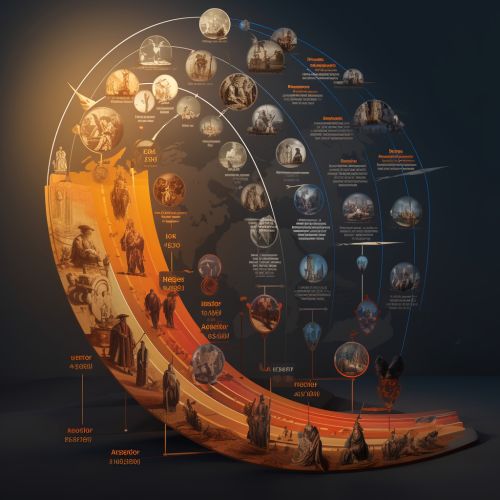Language
Introduction
Language is a complex system of communication that humans use to express abstract thought and convey information. It is a fundamental aspect of human life, enabling individuals to interact with each other and the world around them. It is a system of symbols, sounds, gestures, or marks that are used and understood among a group of people read more.
Origin and Evolution of Language
The origin of language and its evolutionary emergence in the human species is a subject of wide speculation. It is generally agreed that no other species uses language as humans do. However, studies have shown that animals such as primates and birds can use a series of vocalizations, gestures, and symbols to communicate read more.


Structure of Language
Language is structured in several levels: sounds, words, sentences, and discourses. Each level has its own set of rules, which linguists study to understand the structure and function of language.
Phonetics and Phonology
Phonetics is the study of the physical sounds of human speech. It is concerned with the physical properties of speech sounds (phonemes), their physiological production, acoustic properties, auditory perception, and neurophysiological status. Phonology, on the other hand, is the study of the way sounds function within a particular language or languages read more.
Morphology
Morphology is the study of the internal structure of words. It involves the analysis of word formation, including the ways new words are coined in the languages of the world, and the way forms of words are varied depending on the grammatical context read more.
Syntax
Syntax is the study of the principles and rules for constructing sentences in natural languages. The term syntax is used to refer directly to the rules and principles that govern the sentence structure of any individual language, as in "the syntax of Modern Irish" read more.
Semantics
Semantics is the study of meaning. It focuses on the relation between signifiers, like words, phrases, signs, and symbols, and what they stand for, their denotation read more.
Language Acquisition
Language acquisition is the process by which humans acquire the capacity to perceive, produce and use words to understand and communicate. This capacity involves the picking up of diverse capacities including syntax, phonetics, and an extensive vocabulary. This language might be vocal as with speech or manual as in sign read more.
Language and Society
Language is a social phenomenon. In human society, language is a means of both communication and social interaction. In fact, it is often defined as a cultural, social, or even a political construct, reflecting social relationships, structures, and hierarchies read more.
Language and Mind
The relationship between language and mind is a complex and fascinating one. Psycholinguistics, for example, studies how people acquire, comprehend, and produce language, and neurolinguistics studies how language is processed in the brain read more.
Language Change and Variation
Languages change over time. The study of language change is known as historical linguistics. Language variation, on the other hand, is a discipline that studies the variation in the use of language based on social factors read more.
Conclusion
Language is a complex, dynamic system of conventional symbols that is used in various modes for thought and communication. It allows humans to interact, to convey information, to express emotion, to exert influence, and to build relationships. It is an integral part of culture and of the human condition.
